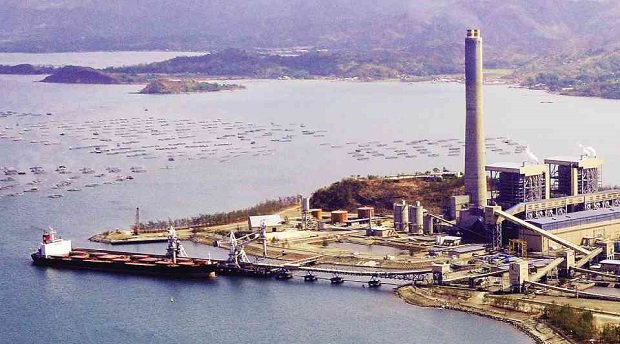MANILA — Power generator First Gen Corporation is urging government to formulate an energy mix policy that would help shield consumers from price surges affecting specific power plant fuels.
First Gen — the country largest electricity producer which has been relying on natural gas as its main source of power — aired the call as prices of coal exhibited more volatility than usual this year.
“Prices of coal have more than doubled between January and October this year,” First Gen president and COO Francis Giles Puno said. “Such price volatility should give us reason to pause and think of other fuels we can use to protect consumers from erratic fuel price movements. One solution is to cap the share of specific fuels we use to generate our electricity.”
Coal is the largest source of power for the country’s power generators. Data from the Department of Energy (DOE) showed that, as of June 2016, coal-fired power plants accounted for 33 percent or 6,666 megawatts out of the country’s 20,055-MW total generating capacity.
But coal’s share in the mix is expected to expand significantly in the coming years.
According to the think tank Institute for Climate and Sustainable Cities (ICSC), there are 4,600 MW of committed and another 6,900 MW of indicative coal-fired power plants in the pipeline in the Philippines also as of June 2016.
With all those coal projects lined up, the country’s dependence on coal would increase to as much as 80 percent by 2030, global analytics firm IHS said.
“We recognize the role of coal in the mix, but that kind of dominance being forecast for this single fuel source will not be good for the economy, especially now when coal prices have turned volatile,” Puno said.
Coal prices, based on the benchmark Newcastle, traded as low as $49 per metric ton at the start of 2016, but surged as high as $108 in late October. So far this month, coal prices have hovered between $90 and $110/MT.
“Coal’s volatility would expose consumers, including business establishments, to drastic and unpredictable changes in their power bills,” the First Gen chief said. “Households and businesses would find it challenging to budget and manage their expenses.”
He added that while coal has staged a rally this year, other energy sources, including natural gas from Malampaya, have remained stable, if not cheaper, than coal.
“If the share in the mix of other power plant fuels such as natural gas is clear, they can help absorb price shocks from coal for the benefit of consumers,” Puno said.
Natural gas from Malampaya provides the fuel for First Gen’s 1,000-MW Santa Rita and 500-MW San Lorenzo combined-cycle power plants located in the First Gen Clean Energy Complex in Batangas City. Both plants hold long-term contracts to sell their output to Manila Electric Company.
The cost of the Malampaya gas is largely indexed against a basket of oil products that include Dubai crude. The Brent oil benchmark, which closely tracks Dubai crude, traded as high as $112 per barrel in 2014, but its price now hovers below $50/barrel.
Based on First Gen’s simulations, the average generation cost of coal-fired power plants in the country would be P4.52 per kilowatt hour, if coal prices stay at $100/MT. At $80/MT, the average generation cost of coal-fired power plants would be P4.11/kWh.
These rates would be higher than the P3.71 /kWh generation cost of First Gen’s power plants using natural gas from Malampaya.
Even at US$60/MT for coal and US$43/barrel for crude, the average generation cost of gas plants would still be competitive at Php3.71/kWh.
For comparison purposes, the simulations assume that the coal and natural gas plants would run at a 90 percent capacity factor, while crude oil price was assumed at the current rate of $43 per barrel.
Aside from natural gas, clean and renewable energy sources — such as geothermal, hydro, wind and solar — provide the fuel to run First Gen’s plants. Their combined capacity adds up to 3,470 MW. SFM
RELATED VIDEO


